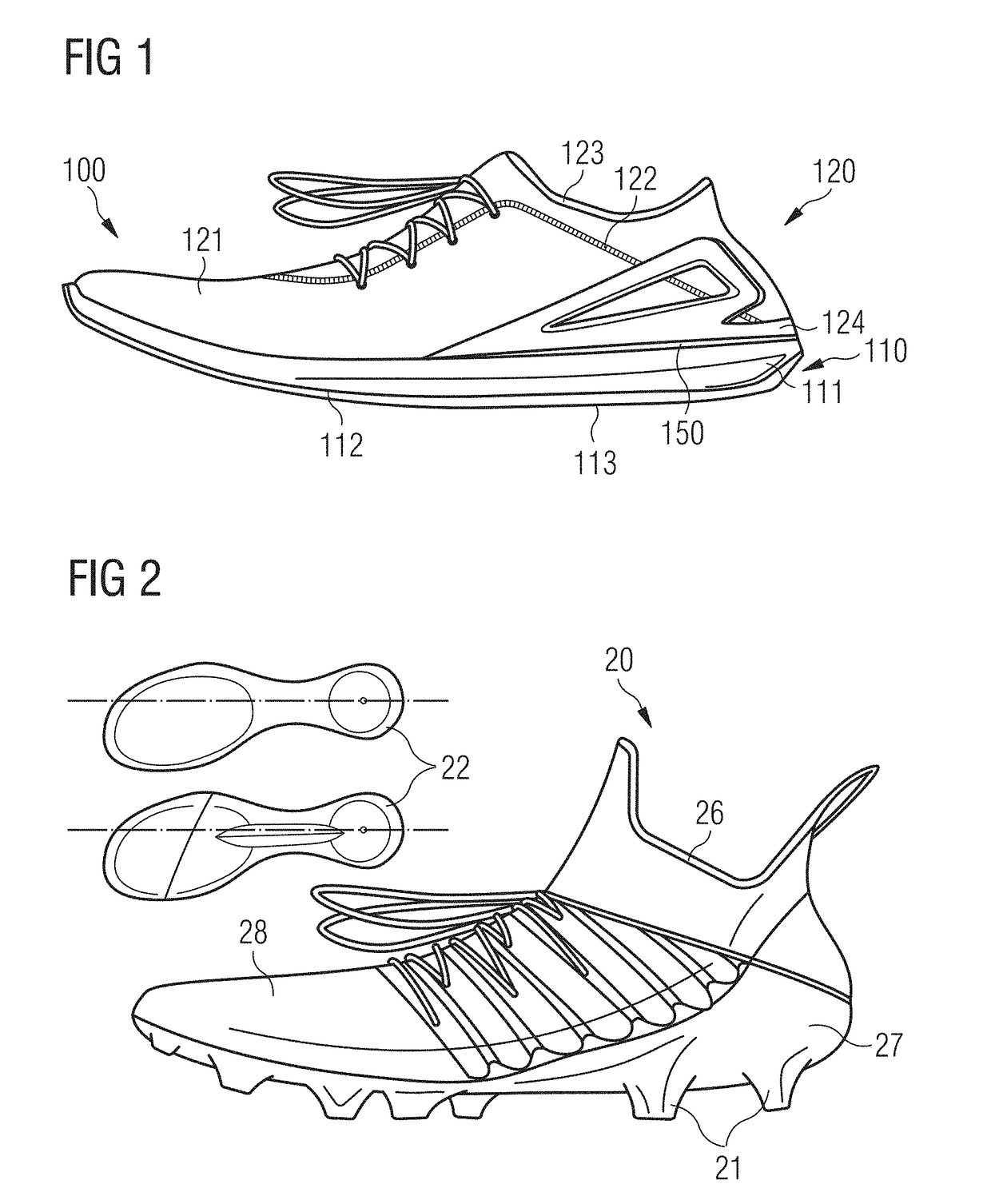Sports Shoes and Methods for Manufacturing and Recycling of Sports Shoes
a technology for sports shoes and manufacturing methods, applied in the field of sports shoes, can solve the problems of large efforts to safely dispose of shoes, waste of shoes, and a large amount of shoes, and achieve the effects of reducing the number of shoes that end up in landfills, and reducing the number of shoes worn ou
- Summary
- Abstract
- Description
- Claims
- Application Information
AI Technical Summary
Benefits of technology
Problems solved by technology
Method used
Image
Examples
example 1
[0095]Shoe, in particular sports shoe, comprising:
[0096]an upper (120), wherein a majority by weight of the upper is made from a thermoplastic base material;
[0097]a sole (110), wherein a majority by weight of the sole is made from the same thermoplastic base material;
[0098]wherein the sole (110) and the upper (120) are individually fabricated and joined to each other; and
[0099]wherein the thermoplastic base material is selected from one of the following materials: thermoplastic polyurethane TPU, polyamide PA, polyethylene terephthalate PET, or polybutylene terephthalate PBT.
example 2
[0100]Shoe according to Example 1, wherein the thermoplastic base material is adapted to be recycled in a joint recycling process for the upper (120) and the sole (110) so that it can serve as a base material for the manufacture of a further upper and / or sole.
example 3
[0101]Shoe according to Example 1 or Example 2, wherein the thermoplastic base material is a PA selected from one of the following materials: PA6, PA66, PA11, PA1010, PA612, PA610, PA1012, PA410, PA12 or polyether block amide PEBA.
PUM
| Property | Measurement | Unit |
|---|---|---|
| weight | aaaaa | aaaaa |
| thermoplastic | aaaaa | aaaaa |
| physical property | aaaaa | aaaaa |
Abstract
Description
Claims
Application Information
 Login to View More
Login to View More - R&D
- Intellectual Property
- Life Sciences
- Materials
- Tech Scout
- Unparalleled Data Quality
- Higher Quality Content
- 60% Fewer Hallucinations
Browse by: Latest US Patents, China's latest patents, Technical Efficacy Thesaurus, Application Domain, Technology Topic, Popular Technical Reports.
© 2025 PatSnap. All rights reserved.Legal|Privacy policy|Modern Slavery Act Transparency Statement|Sitemap|About US| Contact US: help@patsnap.com

